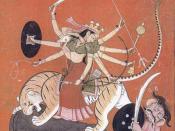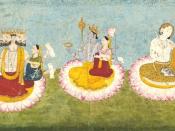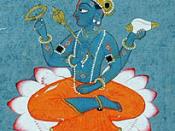"A Brief Analysis of the Role of Lila in Hindu Mythology" The Sanskrit term lila, which best translates to "play" or "sport" in English, is used to both exemplify and explain the powers and actions of Hindu gods and goddesses. In the Hindu mythology, lila establishes the qualities of gods and then further enables devotees to understand the type of relationship that is required as a result of these particular qualities. It is a concept that explains what motivates Hindu deities to act in the first place and while very extensive, can be given insight into with this paper.
As far as exemplifying power is concerned, lila is best represented when it is the context through which the Hindu God, Brahman, creates the world. As God, Brahman, with no desires or necessities, has no logical reason for creating the world and mankind. God, unlike human beings, is not subject to the acquisitive desires (kama) or the cycle of dharma/ karma that motivate the inhabitants of the mortal realm (Sax 14).
Even though one might say that dharma represents duty and the path to God's liberation, God himself is not subject to dharma; he, representing the cosmic order of the universe, is the source of it. To create out of necessity would negate his/her position as the Supreme Being, and in an attempt to recognize and reconcile this fact, the concept of lila is used (Kinsley 2). Lila, as used in the creation myths, grounds the reason for the creation of the universe. Lila, seen as play and as sport, allows God to create and have a world while at the same time uphold his image of having everything and needing nothing. According to Hindus, his lila/creation is simply an expression of his overflowing nature (Kinsley 1). Creation, viewed...


